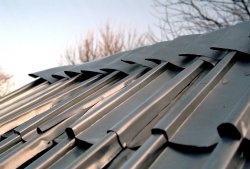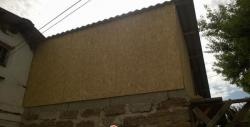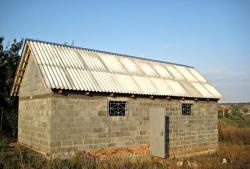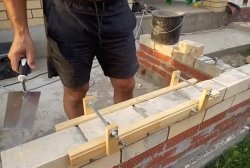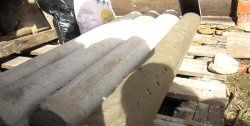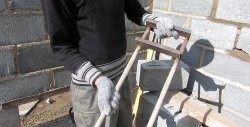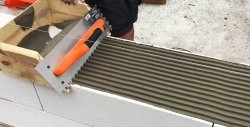The manufacture of the roof begins with the Mauerlat. This is a beam with an approximate cross-section of 12x12 cm, which is simply placed on the edge of the brickwork. The Mauerlat must first be covered with roofing felt on both sides (the side of the timber on which it rests and the outer side protruding onto the street). In the corners the mauerlat is fastened together.
There are two types of gable roof manufacturing. The first type - all structural elements are assembled directly on the roof. The second option is that the trusses are assembled on the ground, after which they are lifted to the roof and leveled. The second option is faster, since it is easier to assemble the structure on the ground. In addition, by making trusses on the ground, it is easier to make them the same.
So, first, the first truss is assembled, which will exactly match the roof design.It is important here to take into account all the dimensions and angle of the slope, since the first truss will be a template for subsequent trusses. After the first truss is ready, rafters are placed at its level, the same angle of the slope is cut, and crossbars (3 pcs.) are attached to the level of the first truss. For crossbars, a board with a thickness of 30 mm is used. These elements are installed at a distance of 30 cm from each other. Trusses can be assembled using nails or self-tapping screws. Although the beams for the rafters can be of different widths, the most important thing is that all the trusses are at the same level on the outside. The tolerance for deviations is 2 cm.
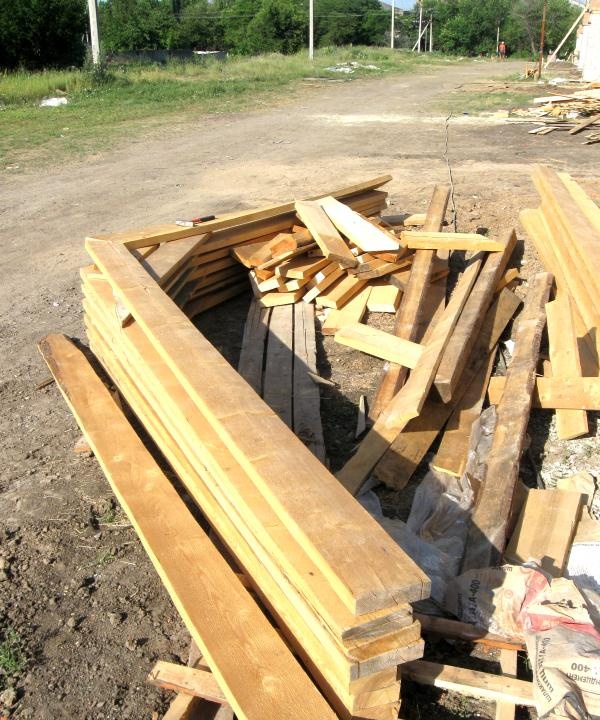
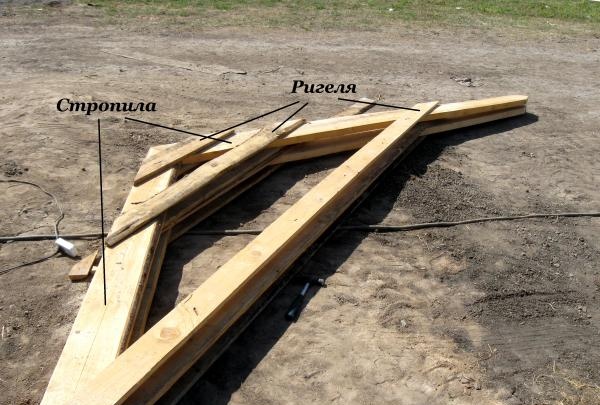

Once all the trusses are assembled, they need to be lifted onto the roof for installation. First you need to secure the two outer trusses, then tighten the fishing line. Thus, the line becomes the level at which subsequent trusses are set. To prevent the wind from tearing off the trusses, temporary fastenings are used to the floor, as well as to each other. In addition, it is necessary to fasten the truss rafters to the Mauerlat using a long nail or self-tapping screw.
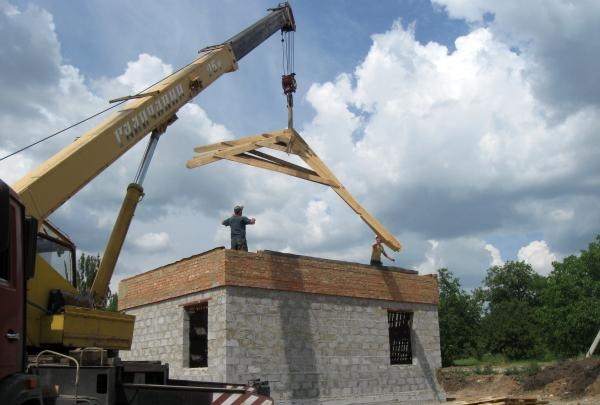
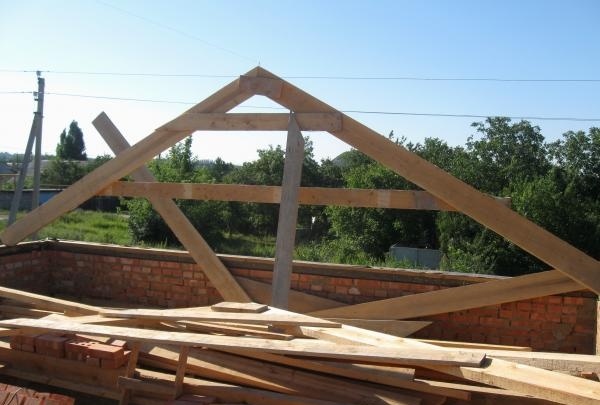

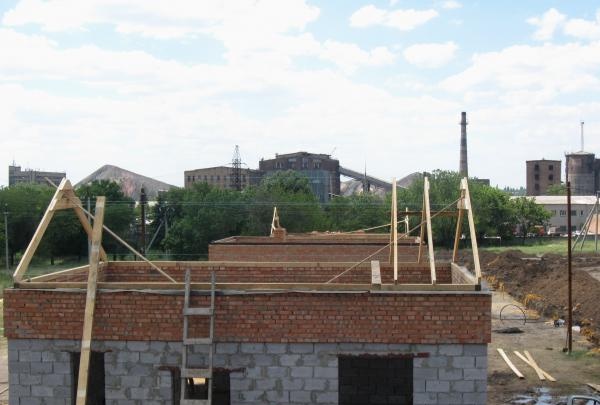
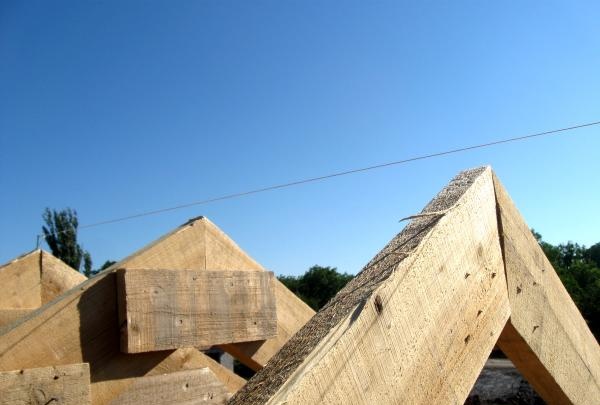
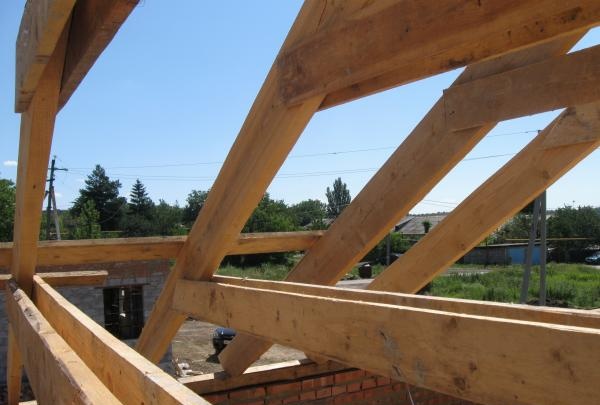
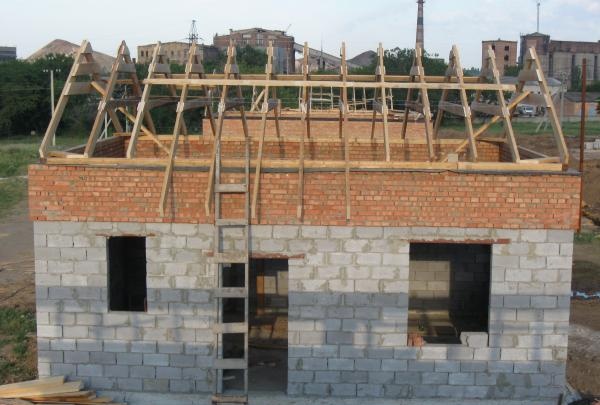
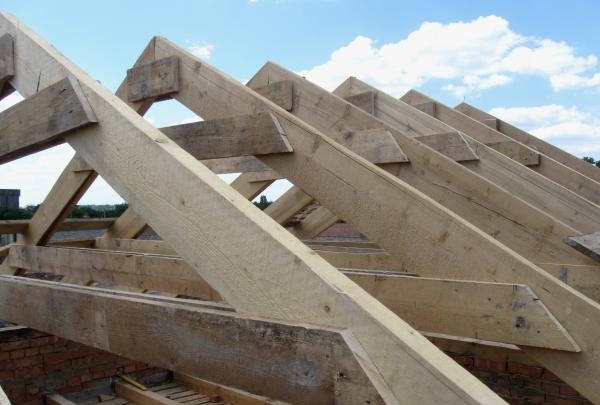
The next stage is attaching the sheathing. Deviations from the sheathing depend on the material with which the roof will be covered. The sample offers a standard option - the top and bottom of the lathing is 80 cm. The remaining boards are attached at a distance of 40 cm from each other. In this case, according to the project, the length of the rafters should be 6.5 m. However, the beams that were purchased for the rafters were 6 m long. Therefore, 70 cm fillets were attached to the edges of the rafters. A 30 mm thick board was used for the fillies.
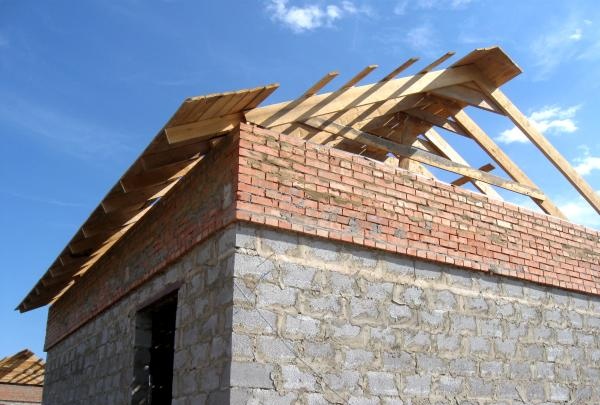

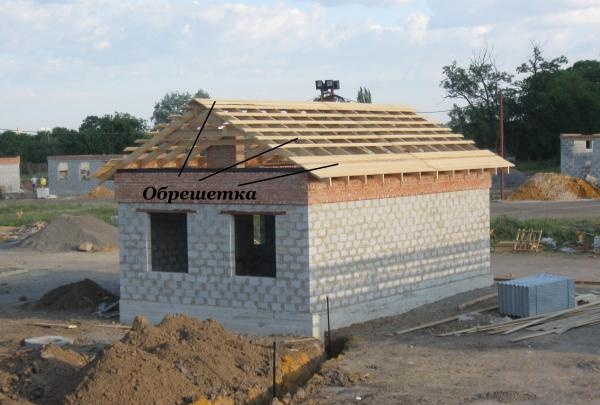
After the trusses are installed, it is necessary to additionally secure the Mauerlat. To do this, the mason makes masonry on the inside of the wall, covering the mauerlat. The masonry runs between the rafters, thereby strengthening the trusses.In addition, tightening must be done on every second truss. This requires wire, as well as anchors, which are installed at a distance of at least 30 cm from the rafters. Then you need to wrap the wire around the rafters with the installed anchors and tighten it well.
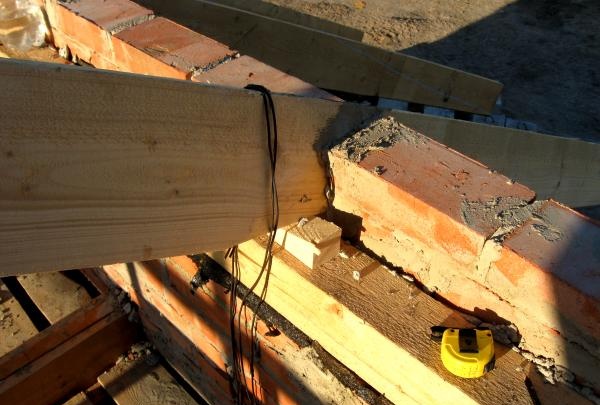
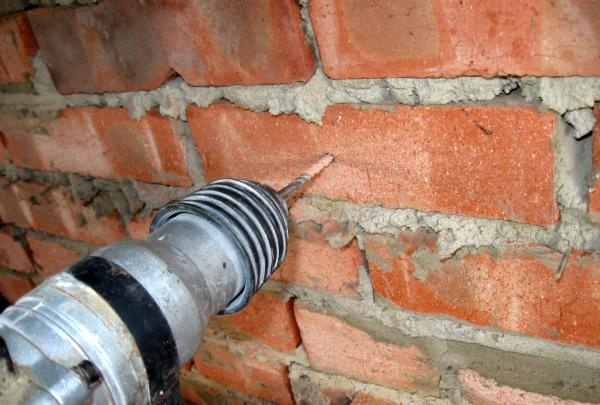
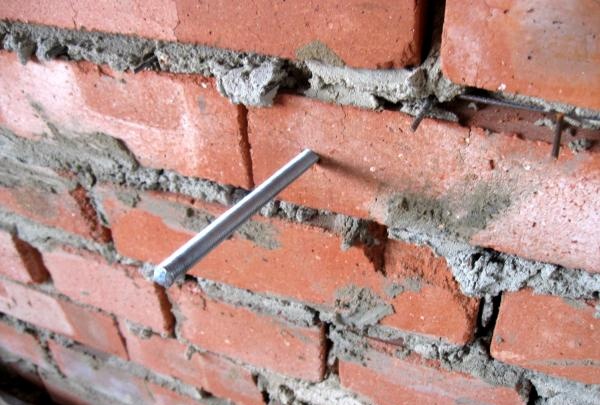
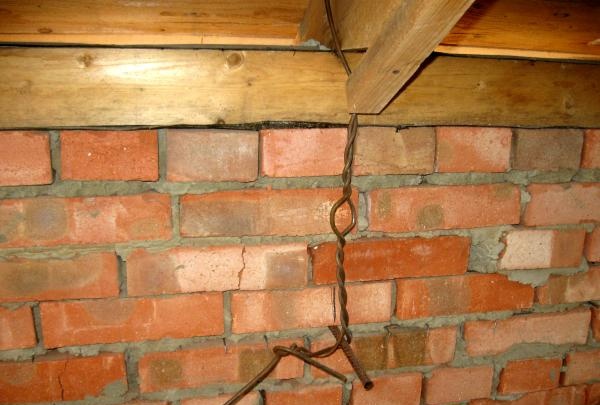
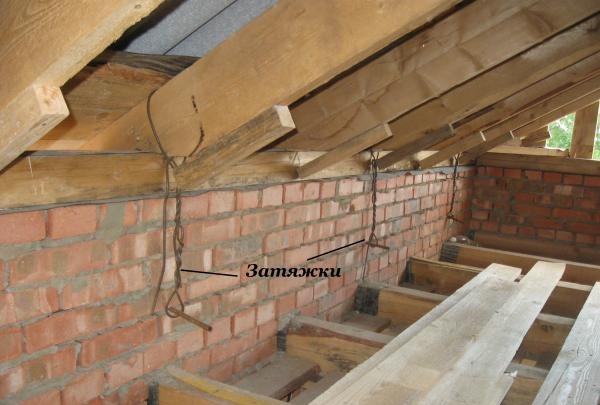
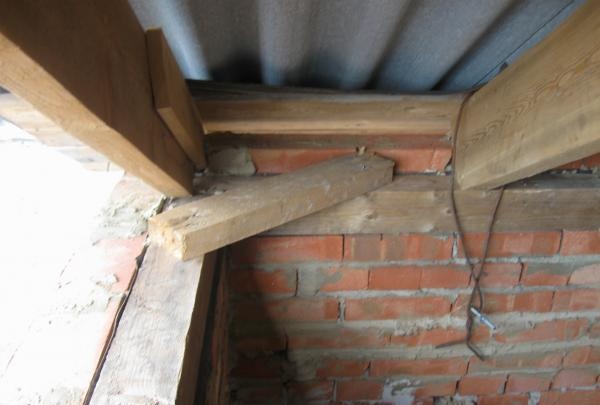
The attic work includes sealing the side gables. In this case, the pediment is covered with hips with an indentation of 10 cm. (board 25 mm thick). The side of the roof that faces the street has a window, and the side that faces the courtyard has a door. In addition, it is necessary to hem the roof overhangs with boards. It is convenient to do this with self-tapping screws, since driving nails from below is inconvenient.

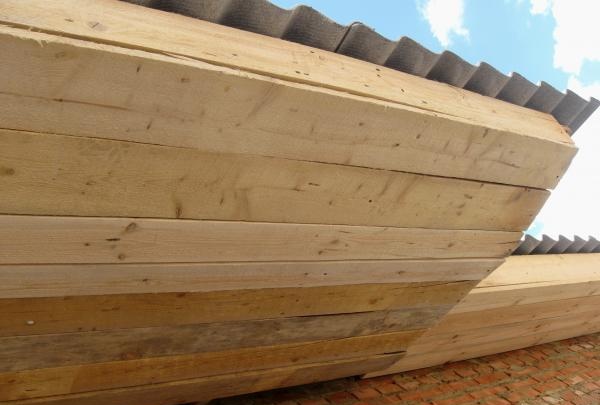
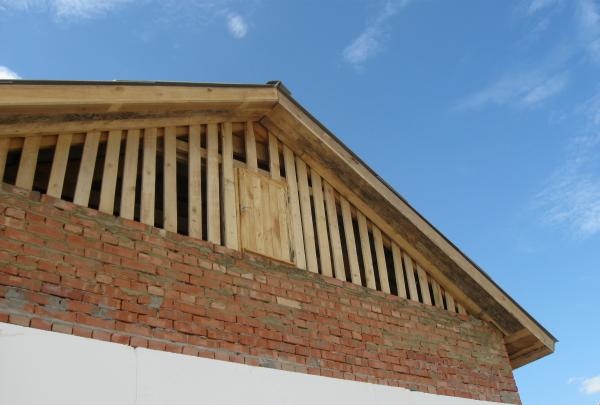

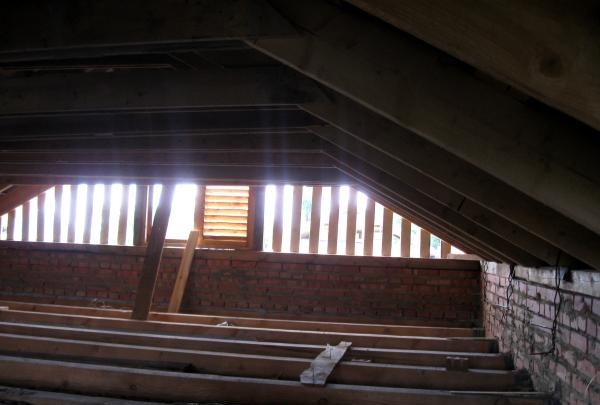
First grade timber is required to make the roof. Even if there is tree bark in the material, it must be cleaned off with an axe, but under no circumstances should it be left behind. In addition, all wood material used must be treated with an antiseptic for fire safety, as well as for protection against pests.


